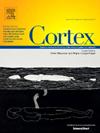Differentiated, rather than shared, strategies for time-coordinated action in social and non-social domains in autistic individuals
Abstract
Autism spectrum disorder (ASD) is a neurodevelopmental condition with a highly heterogeneous adult phenotype that includes social and non-social behavioral characteristics. The link between the characteristics assignable to the different domains remains unresolved. One possibility is that social and non-social behaviors in autism are modulated by a common underlying deficit. However, here we report evidence supporting an alternative concept that is individual-centered rather than deficit-centered. Individuals are assumed to have a distinctive style in the strategies they adopt to perform social and non-social tasks with these styles presumably being structured differently between autistic individuals and typically-developed (TD) individuals. We tested this hypothesis for the execution of time-coordinated (synchronized) actions. Participants performed (i) a social task that required synchronized gaze and pointing actions to interact with another person, and (ii) a non-social task that required finger-tapping actions synchronized to periodic stimuli at different time-scales and sensory modalities. In both tasks, synchronization behavior differed between ASD and TD groups. However, a principal component analysis of individual behaviors across tasks revealed associations between social and non-social features for the TD persons but such cross–domain associations were strikingly absent for autistic individuals. The highly differentiated strategies between domains in ASD are inconsistent with a general synchronization deficit and instead highlight the individualized developmental heterogeneity in the acquisition of domain-specific behaviors. We propose a cognitive model to help disentangle individual-centered from deficit-centered effects in other domains. Our findings reinforce the importance to identify individually differentiated phenotypes to personalize autism therapies.

 求助内容:
求助内容: 应助结果提醒方式:
应助结果提醒方式:


